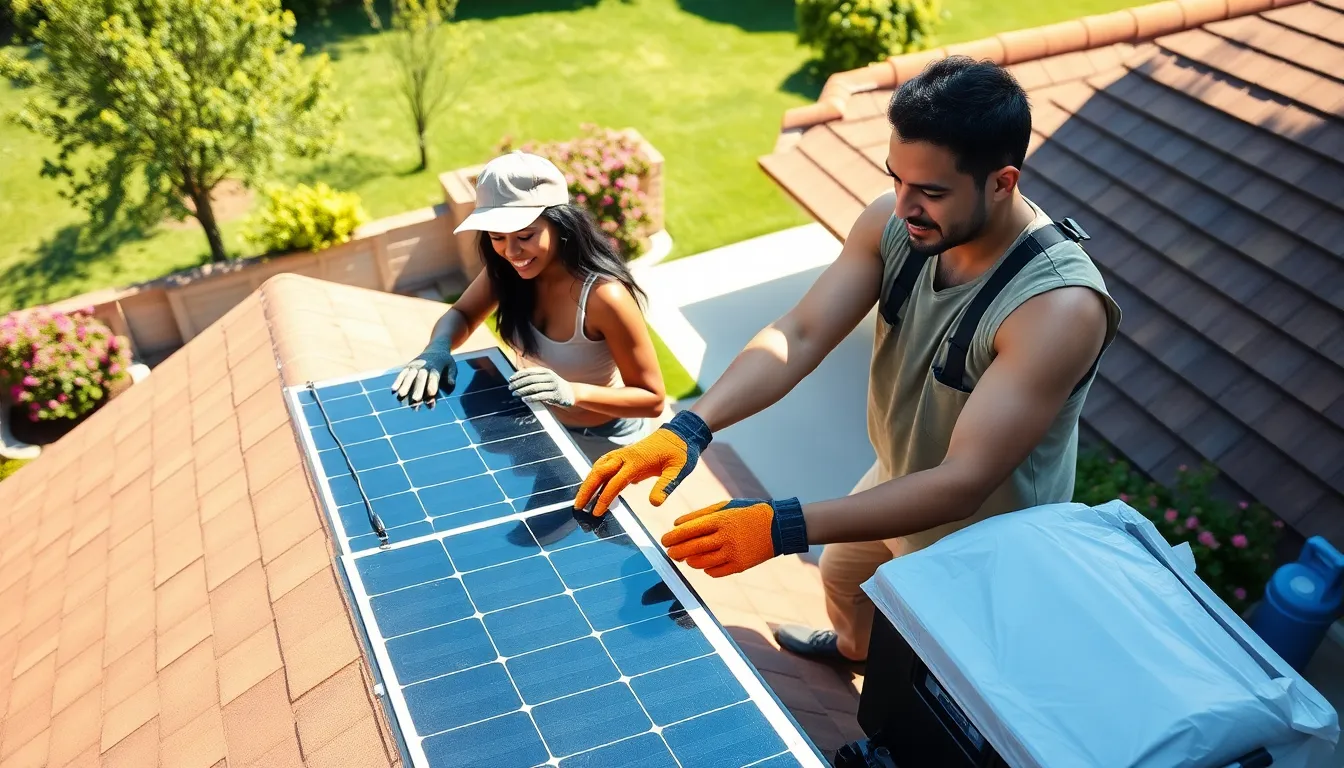In an era where sustainable energy solutions are essential for a greener future, DIY solar energy systems are gaining traction among homeowners. This innovative approach not only offers an eco-friendly alternative for energy consumption but also reduces utility costs significantly. With this comprehensive guide, homeowners can explore the multifaceted benefits of DIY solar energy while drawing inspiration from the unique and eco-sensitive pangolin.
Table of Contents
ToggleUnderstanding DIY Solar Energy Systems

DIY solar energy systems enable homeowners to harness the power of sunlight to generate their own electricity. Such systems typically consist of solar panels, an inverter, battery storage, and a charge controller. Understanding how these components work together is essential for a successful installation.
Solar panels convert sunlight into direct current (DC) electricity, which is then converted into alternating current (AC) electricity by the inverter, making it suitable for home appliances. Battery storage allows homeowners to save excess energy generated during sunny days for use during cloudy days or at night. Each part of the system plays a crucial role in ensuring efficient energy production and consumption.
Benefits of Solar Energy for Homeowners
The shift to solar energy offers numerous benefits for homeowners:
- Cost Savings: Utilizing solar energy can significantly reduce or even eliminate electricity bills. Over time, the savings on energy costs can surpass the initial investment in solar panel installation.
- Environmental Impact: Solar power is a renewable energy source, unlike fossil fuels that contribute to pollution. Using solar energy reduces a home’s carbon footprint, promoting a cleaner environment.
- Energy Independence: Generating power on-site with solar panels provides homeowners with greater energy independence. This is especially beneficial during power outages or when energy prices rise.
- Increased Property Value: Homes equipped with solar energy systems often see an increase in property value, as more buyers prioritize energy-efficient homes.
- Government Incentives: Many states offer tax credits, rebates, or other incentives to encourage solar energy adoption, making it more financially feasible for homeowners.
Pangolins: Nature’s Eco-Friendly Inspiration
Pangolins, sometimes referred to as “scaly anteaters,” are unique mammals that play an essential role in their ecosystems. These creatures consume vast amounts of ants and termites, helping control pest populations and promoting balanced ecosystems.
What makes pangolins a fitting inspiration for renewable energy practices is their role in sustainability. They are a reminder that every creature contributes to the environment’s health, much like solar energy systems that aid in protecting our planet. Advocating for the protection of pangolins and their habitats is crucial as they face threats such as poaching and habitat loss. By integrating sustainable practices, homeowners can align with the spirit of conservation that pangolins embody.
How to Incorporate Solar Energy at Home
Integrating solar energy into a home can be a rewarding project. Here’s a structured approach to doing it yourself.
Step-by-Step Guide to Installing Solar Panels
- Assess Your Home’s Energy Needs: Begin with a detailed assessment of your electricity consumption to determine how many solar panels you’ll need.
- Choose Your Installation Location: Select optimal locations for solar panels, considering roof orientations, shading, and available space.
- Install Mounting Hardware: Secure mounting brackets to your roof or ground, ensuring they are properly anchored for durability.
- Connect the Solar Panels: Carefully mount the solar panels to the brackets and connect the panels in series or parallel, depending on your system design.
- Install the Inverter and Connect Wiring: Place the inverter close to your power panel and connect it to the solar panel output.
Choosing the Right Solar Equipment
When selecting solar equipment, consider:
- Solar Panels: Look for high-efficiency panels with good warranties.
- Inverter Type: Choose between string inverters and microinverters based on your system’s complexity.
- Battery Storage: Evaluate options based on capacity and technology to store excess energy.
Tips for a Successful DIY Installation
- Research Local Regulations: Ensure compliance with local building codes and regulations.
- Use Quality Tools: Invest in quality installation tools to ensure safety and reliability.
- Follow Safety Guidelines: Always wear appropriate safety gear and consult manuals during installation to prevent accidents.
Maintaining Your Solar Energy System
Proper maintenance of solar energy systems can enhance their performance and lifespan. Here are some maintenance tips:
- Regular Inspections: Schedule periodic inspections to check for damage, dirt, or malfunctions.
- Clean the Solar Panels: Keeping solar panels free of debris and dirt can optimize energy absorption. Use a gentle cleaner and soft cloth or a solar panel cleaning kit.
- Monitor Performance: Use monitoring systems to track energy production and make adjustments when necessary.
The Future of Sustainable Living with Solar Energy
As concerns about climate change intensify, the future of sustainable living strongly hinges on adopting renewable energy solutions like solar power. Innovations in solar technology are advancing rapidly, making systems more efficient and accessible.
The integration of solar energy with smart home technologies is also growing, enabling homeowners to optimize their energy usage further. The collaborative development of solar energy and energy-efficient appliances can lead to a sustainable lifestyle, eventually benefiting both individuals and the environment.
Conclusion
DIY solar energy systems offer a powerful avenue for homeowners to contribute to a sustainable future. By understanding solar technology, embracing the benefits, and drawing inspiration from nature, particularly from eco-friendly species like the pangolin, individuals can embark on a rewarding journey toward energy independence and environmental stewardship. Conclusively, the adoption of solar is not just about saving money, it’s about nurturing the planet for future generations.






